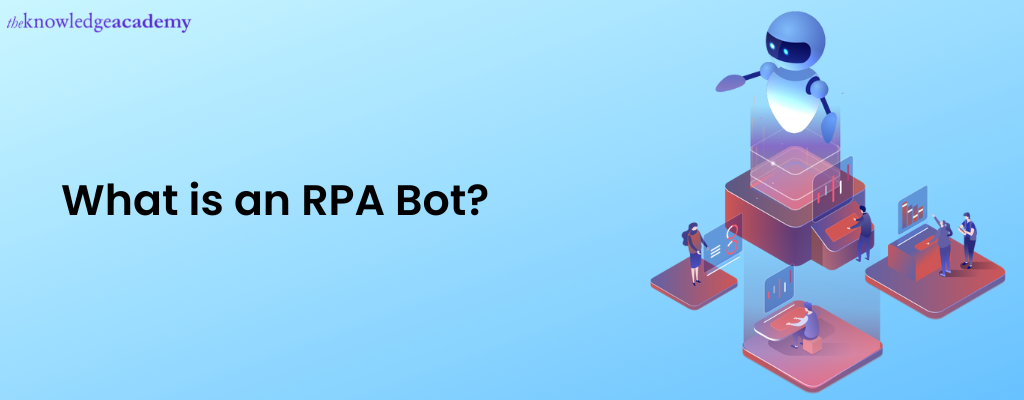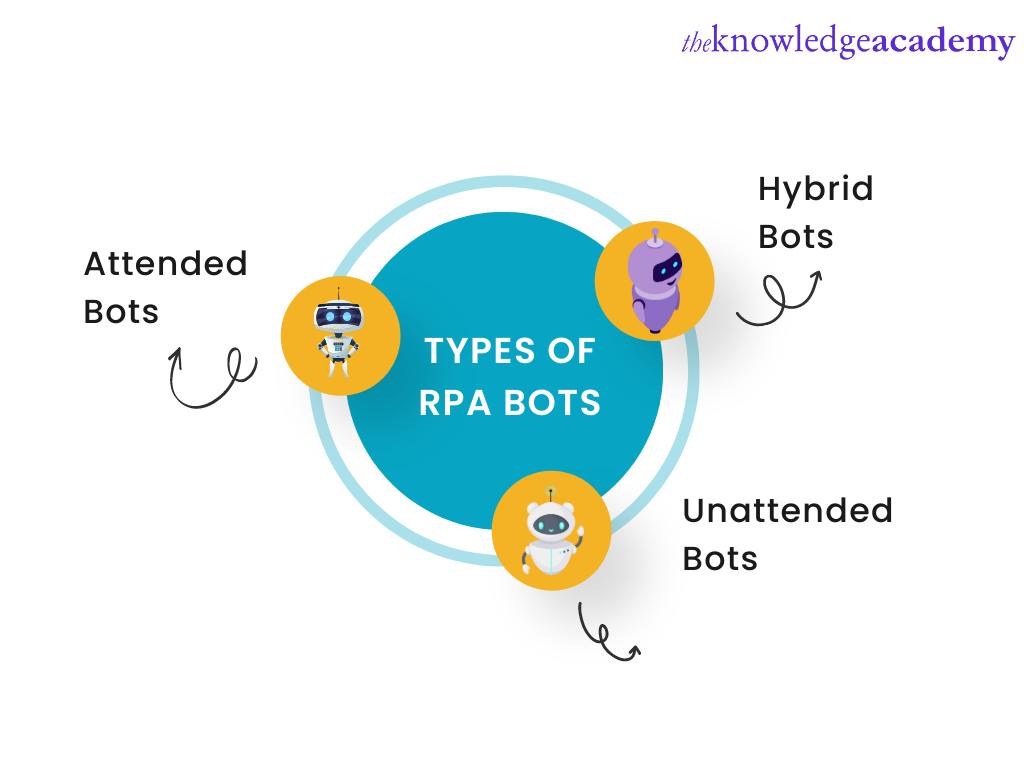We may not have the course you’re looking for. If you enquire or give us a call on +46 850282424 and speak to our training experts, we may still be able to help with your training requirements.
Training Outcomes Within Your Budget!
We ensure quality, budget-alignment, and timely delivery by our expert instructors.

In today’s fast-paced digital world, businesses aim to streamline operations and reduce costs. One way to achieve this is using Robotic Process Automation (RPA) Bots. RPA Bots can automate repetitive, time-consuming tasks freeing up valuable time so that employees may focus on higher-value tasks.
According to a survey by Sapio, up to 92% of organisations worldwide believe that RPA is pivotal for running their everyday operations. In this blog, we’ll uncover why RPA Bots have become necessary for most organisations worldwide, the types of Bots and the advantages and disadvantages of using RPA Bots.
Table of Contents
1) What are Robotic Process Automation (RPA) Bots?
2) Types of RPA Bots
a) Attended Bots
b) Unattended Bots
c) Hybrid Bots
3) Advantages and disadvantages of RPA Bots
4) Conclusion
Explore the basics of RPA by signing up for our Robotic Process Automation using UiPath course now!
What are Robotic Process Automation (RPA) Bots?
RPA Bots are computer programs that are designed to interact with software applications. It also mimics a human user's actions, such as entering data, navigating through systems, copying and pasting information, and performing calculations.
RPA Bots can be used to automate a wide variety of processes across various industries. This includes data entry, report generation, accounts payable and receivable, inventory management, customer service and more. They can be configured to work on a scheduled basis or triggered by specific events and can work 24/7, providing continuous process automation.
RPA Bots can be developed using low-code or no-code platforms, allowing non-technical users to create and deploy automation solutions. Once deployed, these bots can benefit the organisation significantly, including increased efficiency, improved accuracy, faster processing times and reduced costs.
Types of RPA Bots

There are three main types of RPA Bots:
Attended Bots
These bots are designed to work in conjunction with human employees. They operate on the employee’s desktop and are triggered by specific events or actions, such as opening an application or completing a form. Attended bots can assist employees by automating repetitive tasks and completing them in the background while the employees focus on other work that needs the human touch.
Unattended Bots
These bots operate independently of human intervention and are designed to work on a schedule. They are typically deployed on a server or in the cloud and can perform tasks 24/7 without human supervision. Unattended bots are often used for processes that are high volume and require continuous processing, such as invoice processing, report generation and data entry.
Eager to learn more about Robotic Process Automation, refer to our blog on "RPA testing"
Hybrid Bots
These bots combine the features of attended and unattended bots. They can operate in the background and be triggered by specific events or on a schedule. Hybrid bots can also switch between attended and unattended modes based on the task and the organisation’s needs.
Each type of bot has its advantages and use cases. Attended bots are ideal for tasks that require human oversight, while unattended bots are well-suited for repetitive and high-volume tasks. Hybrid bots provide flexibility and can be used for various tasks requiring different levels of automation.
Advantages and disadvantages of RPA Bots
Here are some advantages and disadvantages of using RPA Bots:
Advantages
1) Increased efficiency: These bots can work continuously, 24/7, without any breaks or errors, which helps in increasing the efficiency and effectiveness of the organisation.
2) Improved accuracy: These bots are programmed to perform tasks with high accuracy levels, reducing the risk of human error.
3) Cost-effective: Implementing these bots is cost-effective as it eliminates the need for additional manpower and training.
4) Quick deployment: These bots can be easily deployed without any infrastructure changes, reducing the time required for implementation.
5) Enhanced customer satisfaction: These bots can respond much quicker than humans to customer queries and requests, even in real-time, improving customer satisfaction.
Improve the business efficiency of your organisation by signing up for the Microsoft Power Automate RPA Developer PL500 course now!
Disadvantages
1) Limited cognitive abilities: These bots lack cognitive abilities and cannot handle complex tasks that require decision-making, problem-solving or creativity.
2) Reliance on standardisation: These bots require standardised and structured data to function effectively. Any slight change or variation in data can lead to errors in the automation process.
3) Initial investment: Implementing RPA Bots in an existing process requires an initial investment in software and hardware, which might be a stumbling block in small and medium-sized companies.
4) Need for technical expertise: In an existing organisation, RPA Bots may add a level of complexity that employees are not used to. Therefore, either permanent technical help or adequate technical training is needed for employees who are new to bots.
5) Security risk: RPA Bots handle sensitive data, so any security breach or unauthorised access to the bots can significantly damage the organisation. Therefore, it is necessary to have security barriers in place before implementing them.
Conclusion
RPA is a form of software automation that does not require changes to the existing IT protocol, making it a cost-effective and non-intrusive way to automate existing business processes. However, as with any business improvement or automation methodology, there are both pros and cons to RPA Bots.
We hope this blog highlights the importance of RPA Bots while showing why an organisation has to take extra measures to regulate and control them.
Understand how to automate organisational processes using OpenSpan. Sign up for OpenSpan RPA Training now!
Frequently Asked Questions
Upcoming Business Analysis Resources Batches & Dates
Date
 Robotic Process Automation using UiPath
Robotic Process Automation using UiPath
Thu 13th Feb 2025
Thu 10th Apr 2025
Thu 12th Jun 2025
Thu 14th Aug 2025
Thu 9th Oct 2025
Thu 11th Dec 2025







 Top Rated Course
Top Rated Course





 If you wish to make any changes to your course, please
If you wish to make any changes to your course, please


